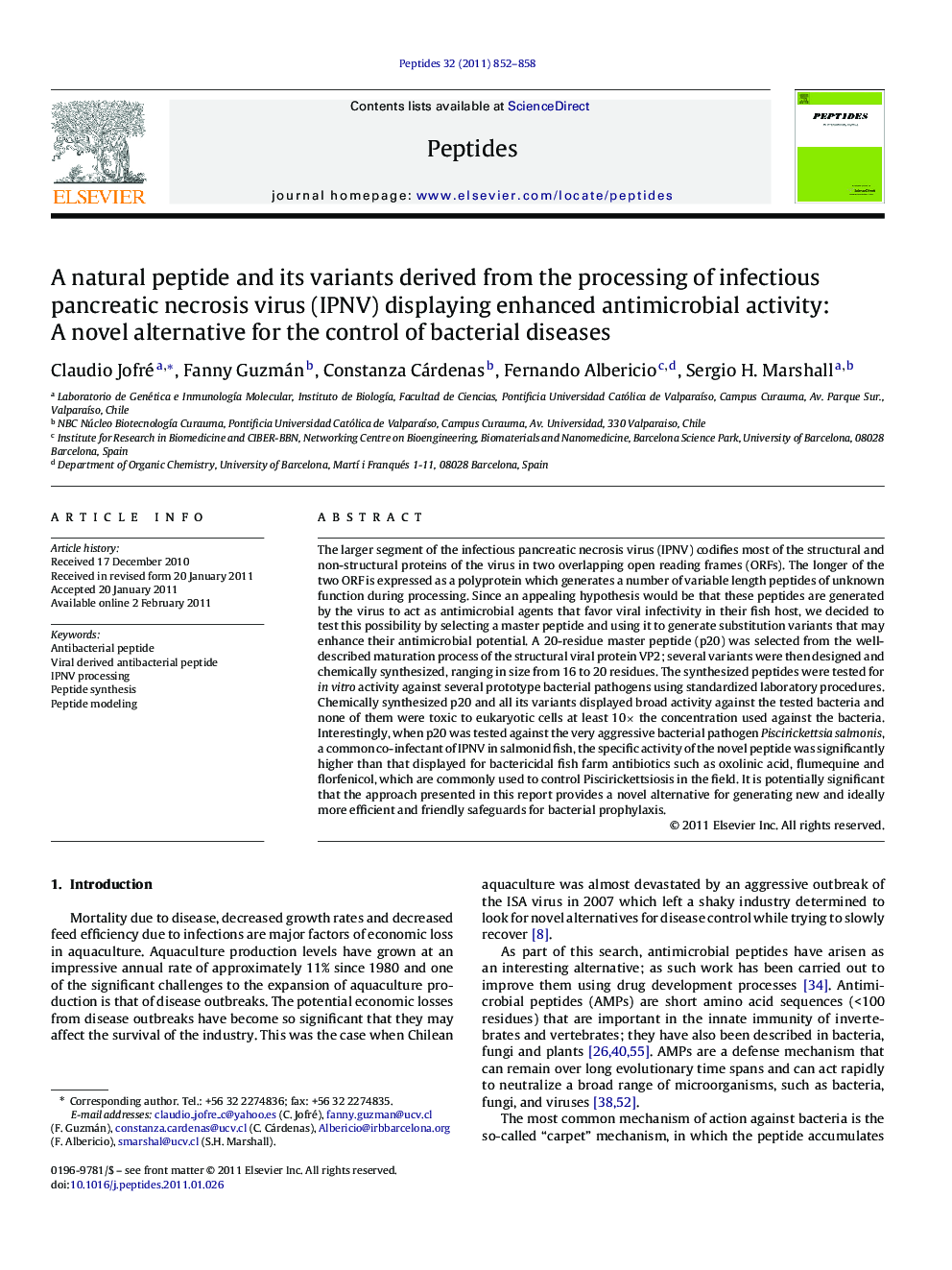| کد مقاله | کد نشریه | سال انتشار | مقاله انگلیسی | نسخه تمام متن |
|---|---|---|---|---|
| 2006533 | 1066345 | 2011 | 7 صفحه PDF | دانلود رایگان |

The larger segment of the infectious pancreatic necrosis virus (IPNV) codifies most of the structural and non-structural proteins of the virus in two overlapping open reading frames (ORFs). The longer of the two ORF is expressed as a polyprotein which generates a number of variable length peptides of unknown function during processing. Since an appealing hypothesis would be that these peptides are generated by the virus to act as antimicrobial agents that favor viral infectivity in their fish host, we decided to test this possibility by selecting a master peptide and using it to generate substitution variants that may enhance their antimicrobial potential. A 20-residue master peptide (p20) was selected from the well-described maturation process of the structural viral protein VP2; several variants were then designed and chemically synthesized, ranging in size from 16 to 20 residues. The synthesized peptides were tested for in vitro activity against several prototype bacterial pathogens using standardized laboratory procedures. Chemically synthesized p20 and all its variants displayed broad activity against the tested bacteria and none of them were toxic to eukaryotic cells at least 10× the concentration used against the bacteria. Interestingly, when p20 was tested against the very aggressive bacterial pathogen Piscirickettsia salmonis, a common co-infectant of IPNV in salmonid fish, the specific activity of the novel peptide was significantly higher than that displayed for bactericidal fish farm antibiotics such as oxolinic acid, flumequine and florfenicol, which are commonly used to control Piscirickettsiosis in the field. It is potentially significant that the approach presented in this report provides a novel alternative for generating new and ideally more efficient and friendly safeguards for bacterial prophylaxis.
Research highlights
► We found a peptide from infectious pancreatic necrosis virus (IPNV) processing.
► It shows a broad activity against Gram negative and Gram positive bacteria.
► The relevant residues for activity was determined through chemical synthesis of alanine variants.
► The peptide showed higher activity against Piscirickettsia salmonis than antibiotics used in aquaculture.
► The peptide was not cytotoxic in eukaryotic cells.
Journal: Peptides - Volume 32, Issue 5, May 2011, Pages 852–858